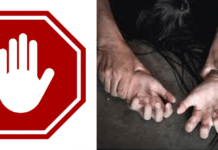CHILD ABUSE AND ITS PREVENTION
Child abuse is a serious problem that can have long-lasting effects on a child’s physical and emotional well-being. It is defined as any act or failure to act by a parent, caregiver, or other adult that results in harm, potential for harm, or threat of harm to a child. Child abuse can take many forms, including physical abuse, sexual abuse, emotional abuse, and neglect.
Child abuse is not just physical violence directed at a child. It is any form of maltreatment by an adult, which is violent or threatening for the child. This includes neglect. When child abuse occurs in the home and the abuser is, for example, the child’s parent or care-giver, this is a form of domestic violence
Preventing child abuse requires a multi-faceted approach that involves individuals, families, communities, and institutions. Here are some strategies that can help prevent child abuse:
Education and Awareness: One of the most effective ways to prevent child abuse is through education and awareness. This includes educating parents, caregivers, and other adults about the signs of abuse and how to report suspected abuse. It also involves teaching children about their rights and how to protect themselves from abuse.
Strengthening Families: Strong families are less likely to experience child abuse. Programs that help families build positive relationships, develop parenting skills, and manage stress can help reduce the risk of abuse.
Support for Parents: Parents need support and resources to help them provide a safe and nurturing environment for their children. This includes access to affordable childcare, mental health services, and financial assistance.
Creating Safe Environments: Institutions such as schools, churches, and sports teams can create safe environments for children by implementing policies and procedures that promote child safety and by providing training to staff and volunteers.
Reporting Suspected Abuse: Anyone who suspects child abuse should report it to the appropriate authorities. This includes child protective services, law enforcement, or a trusted teacher or counselor.
Get involved.
Ask your community leaders, clergy, library, and schools to develop services to meet the needs of healthy children and families.
Help to develop parenting resources at your local library.
Find out whether your local library has parenting resources, and if it does not, offer to help obtain some.
Promote programs in school.
Teaching children, parents, and teachers prevention strategies can help to keep children safe.
Monitor your child’s television, video, and internet viewing/usage.
Excessively watching violent films, TV programs, and videos can harm young children.
Help a friend, neighbor, or relative.
Being a parent isn’t easy. Offer a helping hand take care of the children, so the parent(s) can rest or spend time together.
Help yourself.
When the big and little problems of your everyday life pile up to the point you feel overwhelmed and out of control—take time out. Don’t take it out on your kid.
If your baby cries…
It can be frustrating to hear your baby cry. Learn what to do if your baby won’t stop crying. Never shake a baby—shaking a child may result in severe injury or death.
In summary, preventing child abuse requires a collaborative effort from everyone in society. By educating ourselves, supporting families, creating safe environments, and reporting suspected abuse, we can help protect children from harm and ensure their well-being.



















